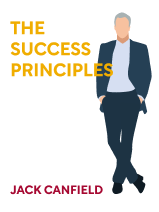

This article is an excerpt from the Shortform book guide to "The Success Principles" by Jack Canfield. Shortform has the world's best summaries and analyses of books you should be reading.
Like this article? Sign up for a free trial here .
Does fear of rejection prevent you from getting what you want? How do you ask for what you want in an unobtrusive yet bold and assertive way?
Sometimes, all it takes to get what you want is asking for it. But it’s easy to hold yourself back—maybe you’re afraid of rejection, so you decide it’s better not to ask than to face a “no.”
Here are some tips on how to ask for what you want to increase your chances of actually getting it.
How to Ask for What You Want
Learning how to ask for what you need and want, even when you’re afraid of the answer, can help you reach your goals.
Follow these steps to ask for what you want:
1. Use clear, precise language. If you ask for something vague, you may get a vague answer or something that isn’t what you want. Learn how to phrase three common requests for change:
- Behavior. If you need someone to do something, tell them specifically what it is. For example, saying, “Would you do the dishes more often?” is less specific than, “I want you to wash the dishes each time I cook a meal, and I’ll wash them when you cook a meal.”
- Time. If you need to have something done at a certain time, but you don’t say so directly, it probably won’t be done at that time. Instead, include a specific time frame in your request, which allows the person you’re asking to make a concrete commitment. For example, let’s say you want to have a phone call with your son. Sending a text that says, “I’d love to talk to you soon,” is not as specific as, “I’d like to talk with you this weekend. Would you be available at 3:30 pm on Saturday?”
- Money. If you’re asking for money, name the amount that you want. For example, saying, “I want a raise” is not as specific as saying, “I’d like a 5 percent raise every six months.”
2. Assume it’s possible. When you make your request, ask with confidence, imagining that they’ll say yes rather than assuming they’ll say no, whether it’s getting a refund when you don’t have a receipt or upgrading to a suite.
3. Ask for the right person. Make sure that the person you’re asking is the person equipped to handle your request. If not, say something like, “I’d like to speak with the person who directs…?” If you’re not sure who the right person to talk to is, ask, “Who is the person who’s involved with…?”
4. Don’t accept rejection. People may not answer yes for a variety of reasons, but if you ask them again another time, they might say yes because:
- You’ve had time to prove your dedication to them or the work.
- They’re in a better mood.
- The economy improved.
- You offer more convincing data or evidence.
One study found that 60 percent of sales are made after the fourth call, but that 94 percent of salespeople give up after the third call. So continue to ask, even if it means asking more times than you’re comfortable with.
Activity: List Your Asks
To encourage yourself to ask for what you need, work through the different areas of your life. Here are the steps:
1. Make a list of things you need to ask for at home, work, and school. Write down how you would benefit from getting each thing you want to ask for. Then, rephrase each item to say, “I want (BLANK) but I don’t ask because I’m afraid of (BLANK).”
2. Write your asks for each of the seven categories from Principle 3: Identify What You Want: relationships, leisure, health, finances, community, career, and personal growth. Examples might include hugs, a higher hourly rate, or an endorsement of your work.
A Rejection That Turned Into “Yes”: Susan Mabet’s Story
Susan Mabet grew up in a poor Maasai village in Kenya. She hoped to attend a girl’s boarding school so that she could pursue an education and career beyond being a homemaker like other girls in her village. Where she lived, girls were married young, became pregnant, and often didn’t survive childbirth. In primary school, Mabet studied hard and earned top grades ahead of applying to the only prestigious boarding school in the region, but she didn’t get in—the school accepted 40 girls that year, and she wasn’t one of them. She decided to go talk to the school to make sure there hadn’t been a mistake.
Mabet arrived on the first day of classes and asked the principal about the decision as other girls arriving for class looked on. The principal explained that the school only had funding to accept 40 girls and Mabet was 41st on the list. Mabet started to cry and the other girls came to her aid, saying they would share desks and do what it took to allow Mabet to study there. The school agreed and a generous donor later agreed to cover her tuition.
Cleaning Up the Mississippi River: Chad Pregracke’s Story
Chad Pregracke wanted to help clean up the polluted Mississippi River. But because there was more trash than his 20-foot boat could handle, Pregracke decided to ask for money to buy equipment like barges and trucks. He went through the phonebook, asking big companies if they’d donate money. His strong desire to make a difference and his willingness to ask resulted in a variety of companies giving him thousands of dollars to buy the equipment and allowed him to lead tens of thousands of volunteers in cleaning up the Mississippi River and 22 other rivers.

———End of Preview———
Like what you just read? Read the rest of the world's best book summary and analysis of Jack Canfield's "The Success Principles" at Shortform .
Here's what you'll find in our full The Success Principles summary :
- The 67 principles to help anyone achieve their goals and dreams
- Why achieving your goals requires you to invest your time and effort
- How to take responsibility for your own life






